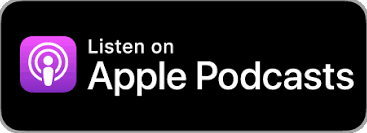Every fall, an email shows up in your inbox from HR with the same, uninspiring subject line: “Action Required: Open Enrollment Ends Soon.”
For many of us, that email triggers the same response: pull up last year’s selections, click “confirm,” and move on with our day.
You know those benefit elections you’re breezing through are really important financial decisions, but you’ve got a ton of work to do and don’t necessarily have time to go line-by-line through your new benefits package.
We’re here to tell you that you probably want to make the time, especially these days as healthcare and insurance costs continue to rise, and investment plans are undergoing high levels of volatility. Your selections each year affect your taxes, your family’s protection, and your ability to build wealth.
If it sounds like you’re adding a bunch more work to your plate, don’t worry. We’ll take you through the big decision points below, and we’re ready and waiting to help you one-on-one if we can.
Getting Started With Open Enrollment
Why does open enrollment matter for financial planning?
- Your benefit choices directly impact your cash flow, taxes, and family protection
- What worked five years ago may not fit your life today
- Small decisions during enrollment can create big financial consequences
What should you review during open enrollment?
- Health insurance: Look beyond premiums to total cost based on your actual usage
- Life insurance: Assess if group coverage meets your current family needs
- Disability insurance: Understand the tax treatment of your benefits
- FSAs and HSAs: Use pre-tax dollars to increase purchasing power for healthcare and childcare
- Deferred compensation: Consider deferring income in high-earning years
What's the bottom line?
- Look at open enrollment as your annual opportunity to align your benefits with your current life. Don’t just check the same boxes as last year without thinking.
Why Open Enrollment Deserves a Spot in Your Financial Plan
Your benefits package touches almost every corner of your financial life. Health insurance affects your cash flow and care options. Life and disability insurance protect your family’s stability. FSAs, HSAs, and deferred comp accounts influence your tax strategy.
The benefits you chose five years ago may not fit your life anymore. Life is always evolving, and your coverage should evolve with it. Open enrollment can be an annual reset for you to look at your family’s situation today (not five years ago) and make choices that actually fit.
Rethinking Your Options
Instead of clicking “confirm all” and moving on, take a few minutes to rethink whether last year’s elections still make sense. A quick review of your options could save you significant money in the long run.
Health Insurance: Cost ≠ Value
It’s not uncommon for people to skim the premiums for their various health insurance options, pick the cheapest plan, and call it a day. But the cheapest premium isn’t always the best deal. It’s just the smallest number on the screen.
Think about how your family might use healthcare this year. New prescriptions, surgeries, or ongoing treatments all change the equation. So do major life changes like a new baby or approaching retirement.
For example, we worked with a couple expecting their first child. The husband also needed knee surgery and months of physical therapy. Their HMO didn’t cover his PT, and they knew new baby-related care was coming. They switched to a PPO with higher premiums but broader coverage.
The result was lower total spending, less stress, and no surprise out-of-network bills.
Life Insurance: Group or Individual Coverage?
Life insurance is another thing that should evolve as your life does. The coverage you need will shift if you have a growing family, a paid-off mortgage, a new home purchase, or retirement on the horizon.
A “one-size-fits-all” employer policy often doesn’t provide the coverage you actually need.
Group life insurance through work is a great start, but it’s not a forever solution. For one thing, the minute you leave your company, that coverage goes with it.
If your only coverage is through your job, consider supplementing it with an individual term or whole life policy. It’s often more affordable long-term and gives you control no matter where your career takes you.
Disability Insurance: Small Detail, Big Payout
Disability insurance replaces your income if you can’t work due to illness or injury. But one tax detail can make a huge difference in what you actually take home.
If your premiums are paid with pre-tax dollars, any benefits you receive will be taxable income. If you pay with post-tax dollars, the benefits come to you tax-free.
That decision could make a big difference if you ever need to access your benefits. A little attention now could save you from a major financial shock later.
Be sure to also check your coverage limits. Many group plans cap benefits at $5,000 to $10,000 per month. For higher earners, that’s a big gap. You may want to explore supplemental coverage.
FSAs and HSAs: Tools for Everyday Life
Healthcare and childcare costs keep climbing. FSAs and HSAs have built-in tax advantages for these everyday expenses by allowing you to pay for eligible healthcare or dependent care costs with pre-tax dollars.
- Flexible Spending Accounts (FSAs) are employer-provided accounts that allow you to spend pre-tax dollars on eligible medical and family care expenses. FSAs are “use it or lose it,” meaning the funds go away after a certain period if you don’t spend them, so you’ll want to estimate your contributions carefully. Likewise, the accounts disappear if you leave your job.
- Health Savings Accounts (HSAs) are similar, but are designed for individuals with high-deductible plans. This account is yours no matter where you work, and the funds in most HSAs roll over year after year, and can even be invested. Think of them as a stealth retirement account for future healthcare costs..
Remember, you typically only get to elect these accounts once a year, so don’t miss your window.
Beyond Your Salary: Tips to Optimize Compensation
Your base salary might feel steady year to year, but your total compensation can swing dramatically. And when your compensation swings, so does your tax bill.
Expiring stock options, lump sum RSU vesting, or commissions hitting all at once can push you into a higher tax bracket faster than you’d expect. The question is whether your employee benefits offer tools to help you manage that situation better.
Know What’s Coming and How It Might Be Different
Don’t assume this year’s income will mirror last year’s. Take a minute to look at what’s actually coming this year:
- What’s vesting?
- Are any options expiring soon, and what’s your plan for exercising them?
- Is this shaping up to be a high-income year or a more typical one?
Knowing the answers to these questions gives you options. And if you’ve already maxed out your traditional retirement plan contributions, one of the most powerful tools available during open enrollment is deferred compensation.
Deferred Compensation Opportunities
If you’ve maximized what your 401(k) has to offer and your company offers a deferred compensation plan, a higher income year could be the time to use it.
Deferred comp lets you delay receiving a portion of your income until retirement or another future date. That means you don’t pay income tax on it this year. Instead, it’s taxed when you actually receive it, potentially at a lower rate when you’re no longer in your peak earning years.
Deferring Won’t Always Be the Right Move
Sometimes you need the cash now, and you’re not able to prioritize tax optimization. College expenses, a new home, or building up your emergency fund might take priority, and that’s perfectly okay. The key is making that decision intentionally, not by default.
Even if you can’t defer income, knowing what’s coming lets you plan proactively:
- Adjust your withholdings through sell-to-cover on RSUs
- Set up quarterly estimated payments
- Work with your accountant before year-end to avoid surprises
The goal is to avoid scrambling at tax time or getting blindsided when April arrives.
Frequently Asked Questions About Open Enrollment
- Which plan is better – PPO or HDHP?
A high-deductible health plan is a good option if you expect lower healthcare needs, while a PPO makes more sense if you use care more often and want flexibility with doctors and specialists.
Your needs can change over time. For example, fresh out of college with minimal medical use, a high-deductible plan may be fine. Once you have a family and doctor visits become more frequent, a PPO could make more sense. Later on, when kids are grown, it might be worth revisiting the high-deductible option again or perhaps an HMO plan.
An important factor when comparing is calculating your total cost. Estimate your expected visits and prescriptions, see what’s covered under each plan, and compare that to the premiums you’d pay. That gives you the best sense of which option actually costs less overall.
- Should I max my HSA even if I won’t use it?
It depends on your cash flow and overall goals. If you’re in strong savings mode and have extra surplus to invest, the HSA can be a great place to build long-term savings given its triple tax benefit — tax-deductible contributions, tax-free growth, and tax-free withdrawals for qualified expenses.
This only makes sense if you’re able to invest the funds rather than letting them sit in cash.
Because it’s not a use-it-or-lose-it account, you can treat the HSA as another retirement bucket earmarked for future healthcare costs. You can even make withdrawals in the future for expenses you paid out-of-pocket in previous years, as long as you’ve kept the receipts.
- I max out my 401k already. Should I contribute more using the after-tax 401k option or just invest in taxable accounts?
It can make sense to use the after-tax 401(k) option if you have strong cash flow and don’t need the money before retirement.
When this strategy becomes really impactful is if your plan allows in-plan Roth conversions. This means you can contribute after-tax dollars and immediately convert them into Roth. It acts as a straight-up Roth contribution if conversions are immediate.
If you don’t have the option to do in-plan Roth conversion, then that extra cash savings may be better saved elsewhere – e.g., 529, HSA, or even a taxable brokerage account.
- What’s the right disability coverage for a high earner?
It depends on how much income you need to replace if you couldn’t work.
If you still have many working years ahead and rely on your income to meet long-term goals, it usually makes sense to opt for the highest coverage available. The standard is 60% of your base salary.
If you’re already in a position where you could retire today and you achieve all of your goals, disability coverage becomes less important. In that case, the basic coverage through work (which is often free) is usually sufficient.
It’s also important to check whether your disability benefits are taxable or tax-free, as that impacts how much income you’d actually receive if you had to claim.
Your Annual Financial Reset
Open enrollment choices really can ripple through your entire financial life:
- Your health plan affects your monthly cash flow.
- Your insurance protects your family’s stability.
- Your FSA or HSA can boost your take-home pay.
- Your equity and comp elections shape your tax future.
There may not be a “perfect” choice every time, but that doesn’t mean you can’t be intentional about your open enrollment choices. Taking half an hour now could save you money (and a lot of stress) later.
At SK Wealth, we help clients turn open enrollment from a quick HR task into a key part of their financial plan. Through our Integrated Financial Advantage™ process, we help you connect the dots to keep every decision, from healthcare to equity comp, aligned with your bigger goals.
Important Disclosure Information
Please remember that past performance is no guarantee of future results. Different types of investments involve varying degrees of risk, and there can be no assurance that the future performance of any specific investment, investment strategy, or product (including the investments and/or investment strategies recommended or undertaken by SK Wealth Management, LLC [“SK Wealth”]), or any non-investment related content, made reference to directly or indirectly in this blog will be profitable, equal any corresponding indicated historical performance level(s), be suitable for your portfolio or individual situation, or prove successful. Due to various factors, including changing market conditions and/or applicable laws, the content may no longer be reflective of current opinions or positions. Moreover, no portion of this discussion or information serves as the receipt of, or a substitute for, personalized investment advice from SK Wealth. contained in this blog serves as the receipt of, or as a substitute for, personalized investment advice from SK Wealth. To the extent that a reader has any questions regarding the applicability of any specific issue discussed above to his/her individual situation, he/she is encouraged to consult with the professional advisor of his/her choosing. Neither SK Wealth’s investment adviser registration status, nor any amount of prior experience or success, should be construed that a certain level of results or satisfaction will be achieved if SK Wealth is engaged, or continues to be engaged, to provide investment advisory services. SK Wealth is neither a law firm nor a certified public accounting firm and no portion of the blog content should be construed as legal or accounting advice. A copy of the SK Wealth’s current written disclosure Brochure and Form CRS discussing our advisory services and fees is available for review upon request or at https://skwealth.com/. Please Note: SK Wealth does not make any representations or warranties as to the accuracy, timeliness, suitability, completeness, or relevance of any information prepared by any unaffiliated third party, whether linked to SK Wealth’s web site or blog or incorporated herein, and takes no responsibility for any such content. All such information is provided solely for convenience purposes only and all users thereof should be guided accordingly. Please Remember: If you are a SK Wealth client, please contact SK Wealth, in writing, if there are any changes in your personal/financial situation or investment objectives for the purpose of reviewing/evaluating/revising our previous recommendations and/or services, or if you would like to impose, add, or to modify any reasonable restrictions to our investment advisory services. Unless, and until, you notify us, in writing, to the contrary, we shall continue to provide services as we do currently. Please Also Remember to advise us if you have not been receiving account statements (at least quarterly) from the account custodian.







